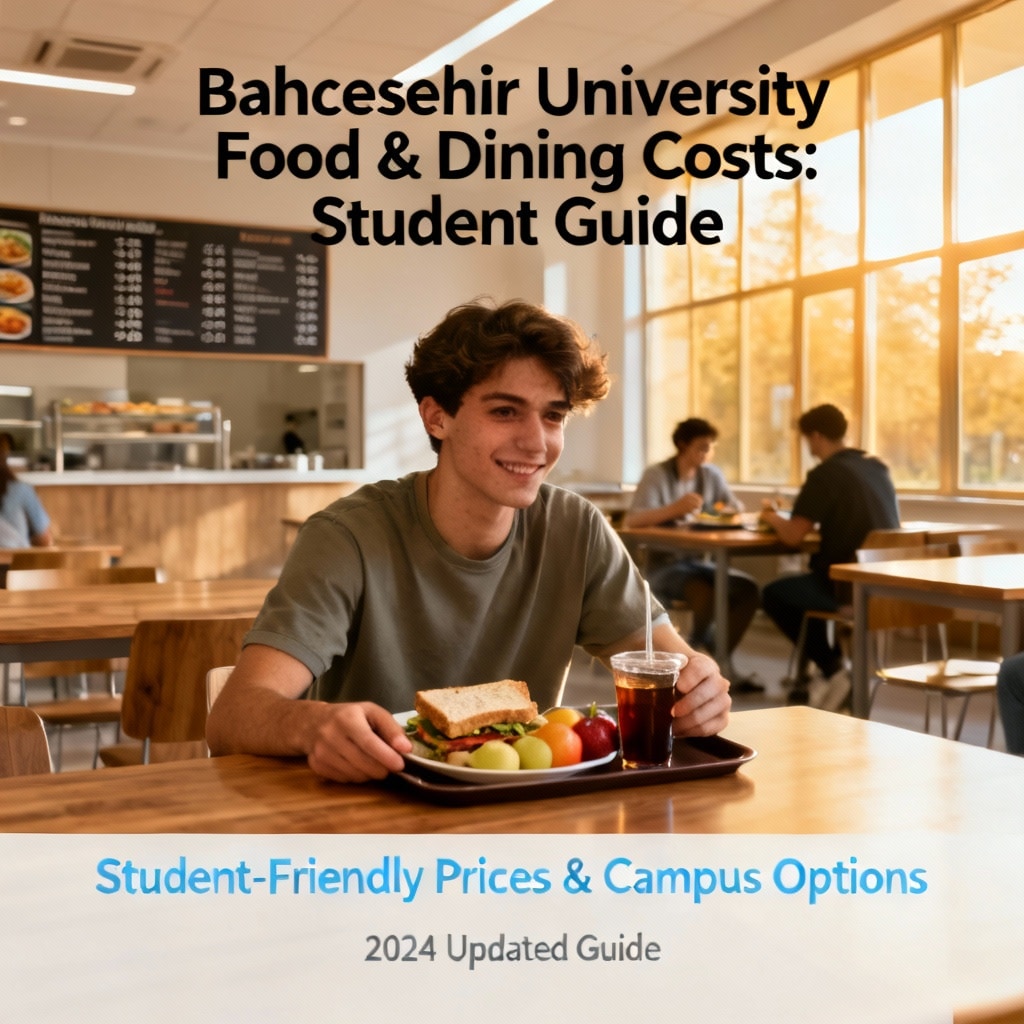Bahçeşehir University Food and Dining Costs
Bahçeşehir University Food and Dining Costs
Understanding Bahçeşehir University food and dining costs is essential for international recruitment teams, admissions officers, HR and marketing professionals in education, and partner agencies advising prospective students. This guide examines the typical monthly expenditures, practical savings strategies, and institutional support options available to students studying in Istanbul.
The average monthly food and dining costs for students at Bahçeşehir University in Istanbul are typically estimated to be in the range of $150 to $300 per month. This figure covers groceries, affordable local restaurant meals, and on-campus dining facilities.
Istanbul’s urban price levels mean students in the city should expect somewhat higher food costs than in smaller Turkiye cities.
Quick Summary (At-a-Glance)
- Estimated monthly food & dining cost: $150 – $300
- On-campus cafeterias: Subsidised, balanced meals at reduced prices
- Eating out (budget restaurants): ~50–100 Turkish lira per meal
- Major cost drivers: Frequency of dining out, dietary preferences, sharing habits, and use of campus facilities
Detailed Breakdown: Where the $150–$300 Comes From
On-campus Cafeterias and Subsidised Meals
Bahçeşehir University operates campus cafeterias that offer subsidised meals to students. These cafeterias are a cost-effective option, providing balanced hot meals, soups, and salads at prices well below local restaurants.
Benefits:
- Predictable daily cost for students.
- Nutrition-focused menus that suit busy academic schedules.
- Opportunities for universities to offer meal plans or discount cards that improve affordability.
Groceries and Cooking at Home
Cooking at home is the most reliable way to lower monthly food costs. Weekly supermarket trips and purchases from local markets can stretch budgets significantly.
Practical Tips:
- Buy staples in bulk (rice, pasta, legumes, cooking oil).
- Use local markets for fresh produce; seasonal items are often cheaper and fresher.
- Share bulk purchases and kitchen responsibilities with roommates to reduce costs and food waste.
Eating Out: Budget Restaurants and Occasional Treats
A standard meal at a budget restaurant in Istanbul commonly costs between 50 and 100 Turkish lira. Students who eat out more frequently should plan toward the higher end of the $150–$300 range.
Advice:
- Recommend neighbourhoods with café/student discounts.
- Encourage students to use student ID discounts and loyalty programs where available.
- Note that weekends and tourist areas can be pricier.
Snacks, Coffee and Incidental Spending
Small daily expenses — coffee, snacks, and takeaways — add up. A modest incidental budget ($20–$60/month) keeps the overall figure within the estimated range.
Sample Monthly Budgets (Student Profiles)
Frugal Planner (Aims for $150/Month)
- Campus cafeteria for lunch (20–22 days): subsidised meals
- Groceries for breakfasts, dinners, cooking at home
- Occasional takeaway or budget café visits
- Shared groceries and cooking with roommates
Balanced Student (Mid-Range, ~$225/Month)
- Mix of cafeteria meals and home-cooked dinners
- 6–10 budget restaurant meals per month
- Moderate spending on coffee/snacks and groceries
Social Student (Higher End, Near $300/Month)
- Frequent dining out and social weekends
- Specialised diets or imported ingredients
- Higher incidental spending (delivery apps, cafés)
Cost-Saving Strategies for Students and University Partners
For Students
- Prioritise campus cafeteria usage for regular meals.
- Cook in batches and share groceries with flatmates.
- Use student discount cards and follow university social channels for meal deals.
- Plan a weekly grocery list to avoid impulse purchases.
For University Admissions Teams and Recruiters
- Include clear, localised living cost ranges in offer packs to set expectations.
- Provide downloadable sample budgets and cost calculators that incorporate dining options.
- Promote the availability of subsidised cafeterias and any meal plans in university communications.
For HR and Marketing Teams in Education
- Use targeted messaging that highlights affordability and student services (e.g., campus dining).
- Showcase case studies or testimonials from current international students about living affordably in Istanbul.
- Integrate food and living cost information into recruitment automation workflows to increase lead quality and reduce drop-off.
Comparing Bahçeşehir University with Other Istanbul Universities (Food & Dining Context)
Recruiters and agents often compare universities on living cost and student services. While Bahçeşehir University offers subsidised dining, consider these peer institutions in Istanbul when advising students:
- Medipol University — known for extensive student services.
- Beykent University — campus life and affordable options for students.
- Uskudar University — offers student-focused support and campus amenities that influence living expenses.
- Ozyegin University — modern campus facilities and on-site dining options.
Frequently Asked Questions (FAQs)
Are campus meals enough for most students?
Yes — many students rely on campus cafeterias for regular lunches and supplement with home-cooked dinners and occasional meals out. Using subsidised meal services is one of the easiest ways to stay within the $150–$300 estimate.
What is a realistic grocery budget?
A student cooking most meals at home can expect groceries to make up a significant portion of the monthly budget. Shared shopping and seasonal produce can substantially reduce weekly grocery bills.
Should students budget more if they eat out often?
Yes — frequent dining out pushes students toward the higher end of the $150–$300 range. International cuisine and delivery apps will increase expenses further.
Take the Next Step with Study in Turkiye
Understanding Bahçeşehir University food and dining costs is a small but powerful element of effective student recruitment and admissions. Clear, actionable guidance helps improve applicant decisions and strengthens institutional reputation.

